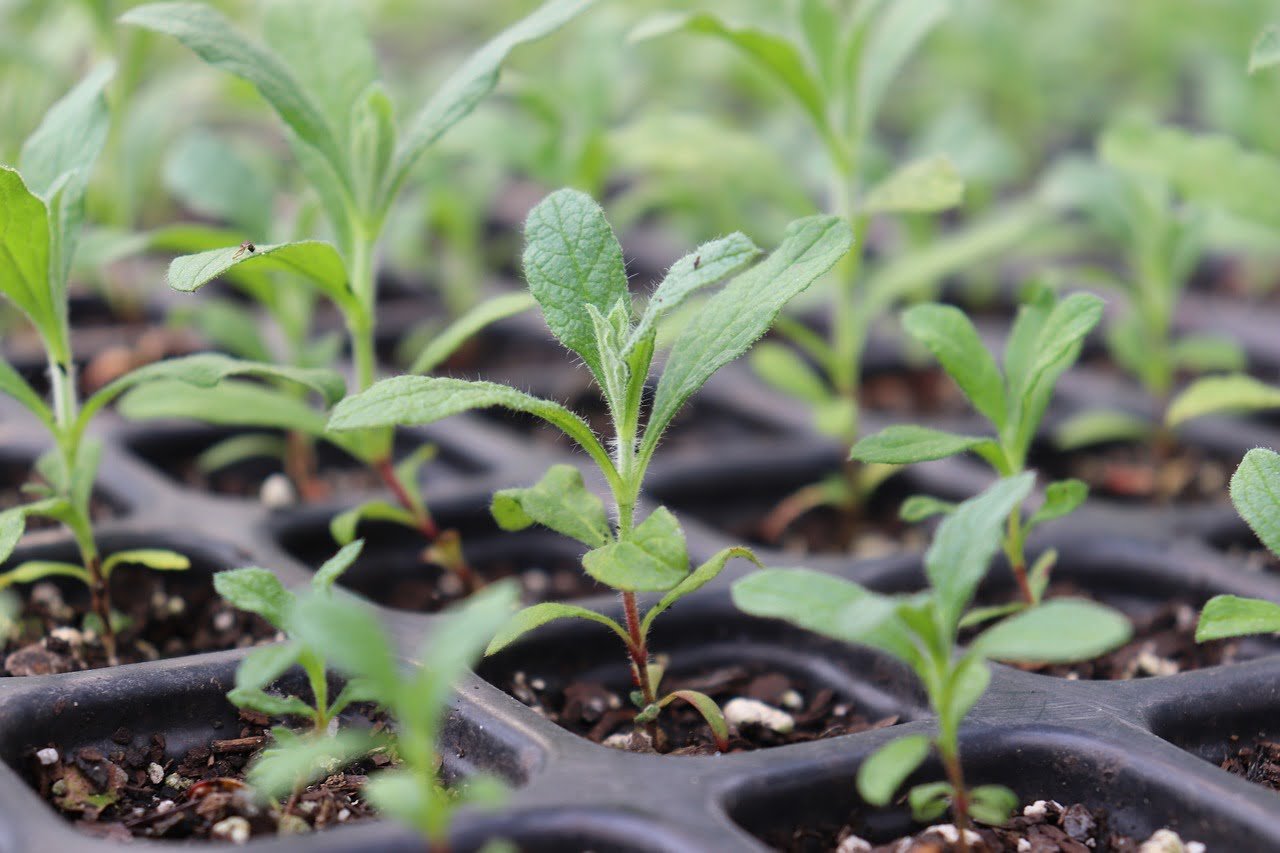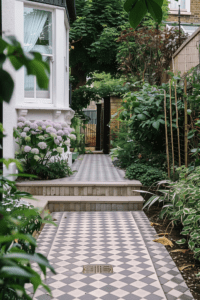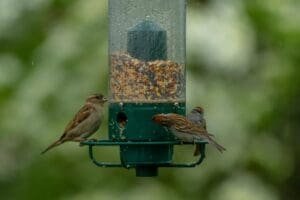Gardening is a great hobby that can have many benefits, including improved mental health, a form of physical exercise and it can offer a sense of accomplishment. However, with the rising costs of living, it is useful to consider ways that you can save money when gardening.
It can be easy to spend lots of money when you start gardening as the cost of purchasing plants, materials and various tools can quickly add up. Fortunately, there are numerous ways that you can save money without sacrificing the beauty and productivity of your garden.
In this post we have outlined some simple tips and strategies that you can use to save money whilst gardening. Whether you’re a seasoned gardener or a beginner, these money-saving tips will help you to enjoy your gardening without spending lots of money.
Tips to help save money when gardening
- Plan out your planting
- Grow plants from seed
- Use bare-root plants
- Give old outdoor furniture a makeover
- Save water
- Save money on tools
- Buy in bulk
- Look out for clearance plants
- Work with neighbours, friends, and family
This post contains affiliate links which means we may make commission from any qualifying sales with no extra cost to yourself.
1. Plan out your planting
Most gardeners in the UK are pretty impulsive, whatever catches their eye in the garden centre is usually what ends up in the garden. The problem with this is that what looks best on show in the garden centre is potentially not the best plant for their garden which results in them often being replaced over and over.
With a bit of preplanning, you can plan the planting in your garden to ensure you get the right plant for the right place. By ensuring plants are given the right conditions to thrive, it can save you time and money in the future.
When we first moved into our new house, we started the process of replanting our garden. We found it helpful to create a sketch of the garden and divided it up into distinct areas. Each area of the garden had its own specific conditions, some were full sun, some shaded, some had poor drainage, but this process helped us think about the type of plants we could put in each area. Sketching out the garden helped us visualise which plants would go where and also helped us calculate exactly how many we would need.
We have many pages on this website to help you choose the best plants for different areas of your garden, including plants for shade, drought-tolerant plants, and low maintenance plants.
2. Grow plants from seed
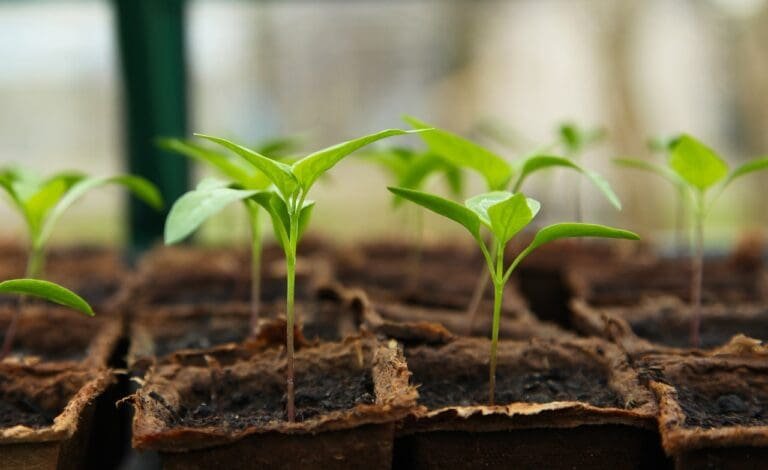
Another great way to save money when gardening is to grow your own plants from seed. Growing your own plants from seed can be a rewarding process and a great way to fill up those garden borders without spending a fortune. Every year we grow some plants from seed using our small pop-up greenhouse. Many of the plants we have grown from seed are perennials which have returned year after year and provide exceptional value for money.
3. Use bare root plants

Hardy bare-root perennials are becoming more popular amongst gardeners because they are a cost-effective method to buy plants which will return year after year. They’re cheaper than buying potted plants from your local garden centre and are faster than growing them from seed. Potted plants are usually more expensive than buying bare-root perennials due to the months of care required, the soil needed, packaging requirements, and the transportation of the plants, all of which is then reflected in their price. Another advantage of buying bare-root perennials is that they typically have larger root systems than potted plants sold in garden centres and can therefore be quicker to establish in your garden.
We recently started replanting our garden in the North of England, having removed many large overgrown shrubs. We considered buying established potted plants in bulk from a nursery but quickly concluded that this was going to be very costly. We then considered growing the plants from seed but realised that this would take some time to get established plants. Purchasing bare-root perennials meant we could quickly transform our garden without breaking the bank.
If you are interested in using bare-root plants in your garden check out our related post: How To Transform Your Garden with Bare-Root Perennials – A Step by Step Guide.
4. Give old outdoor furniture a makeover
Another way to save some money when gardening is to rejuvenate any old outdoor furniture. With some TLC you can bring your old furniture back to their best and give them an extended life.
In order to rejuvenate outdoor wooden furniture, you will first need to clean them down using some mild detergent and hot water. Let the furniture dry completely before sanding down using a fine grit sandpaper to smooth out any rough and uneven areas. Always sand in the direction of the grain, this process will help your paint or varnish to apply better so take your time with sanding. Next, apply your chosen paint or stain to the furniture and make sure it is applicable for outdoor use.
If you’re looking to restore any metal furniture which may have become rusty, you will first need to remove as much rust as possible using a wire brush or steel wool. Clean the metal using some mild detergent and warm water before letting your furniture dry off completely. For any stubborn rust you may need to apply rust remover. You will then be able to apply a coat of paint to bring your old furniture back to life.
Please note: these steps should be taken as a guide, and you should always follow the application instructions of your chosen paints and varnishes.
5. Save water
All household bills have been rising sharply over the last couple of years and water bills are no exception. You might be able to save yourself some cash by reducing the amount of water you use whilst gardening.
The effects of climate change are becoming more apparent in the UK which has experienced frequent periods of drought. Therefore, it is useful to start considering plants for your garden that can handle these dry spells and reduce the need for regular watering.
There are many drought-tolerant plants to consider including salvia’s, sedums and lavender, check out our related blog post for more drought-tolerant planting options.
Another effective way to reduce the need for regular watering is to mulch your garden borders. Mulch is essentially a layer of organic matter such as wood chips, leaves or bark applied to your garden beds which can help the soil retain moisture. Applying mulch has other benefits also, over time it will decompose and improve the soil structure beneath which can improve plant health. Mulch can also quickly improve the appearance of garden beds and help to suppress weeds.
Another easy way to try to reduce your water consumption is to water your plants during the morning. Watering during the morning gives your plants enough time to soak up the water before the strong sun comes up and evaporates water from the soil.
Harvesting rainwater using a water-butt or similar container is another way you can reduce the amount of water you use. Storing rainwater and saving it for dry spells can help reduce those water bills.
For more information on saving water when gardening, check out our related post: 5 Ways to Save Water When Gardening.
6. Save money on tools
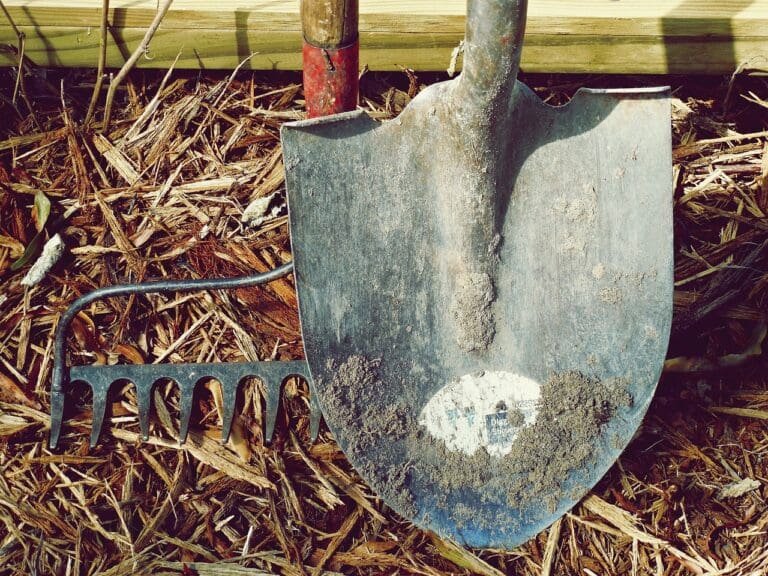
Investing in high-quality tools that are durable and will stand the test of time is my preferred way to save money on tools. Most of my gardening tools, including the essentials such as a spade, pair of secateurs and trowel, I have owned for several years. High quality gardening tools can last a really long time therefore its definitely worth spending that little bit extra if you can to get superior quality.
However, purchasing high quality tools can quickly become expensive if you are just starting out. Facebook marketplace and other second-hand online platforms are a great way to pick up some high-quality tools at cut price.
7. Buy in bulk
Purchasing materials in bulk can be another great way to save money when gardening. Every spring we mulch our garden borders and have found the most cost-effective method is to buy large bulk bags. This can be the same for other common gardening materials such as gravel, compost, and topsoil, so be sure to check out the prices of large bulk bags rather than heading straight for the smaller individual bags from your local garden centre.
8. Look out for clearance plants
Another fantastic way to save money when gardening is to look out for reduced plants in your local garden centre. We have regularly found perennials and ornamental grasses which were looking past their best and had therefore been reduced significantly. I usually find the best time for this is during autumn when some local garden centres are keen to move on plants to make way for the Christmas stock arriving. When looking for reduced plants, I only really ever consider perennials which I know will return or evergreens if I think I can bring them back to their best.
9. Work with neighbours, friends and family
Another way to save money when gardening is to work together with neighbours, friends, and family. You might be able to swap seeds, trade plants or even put orders in together to take advantage of purchasing items in bulk for a lower price. You can also work with your family, friends, and neighbours to borrow each other’s tools which can save you buying new ones.
Final thoughts
In summary, gardening is a fantastic hobby with a wide range of benefits. However, with rising living costs, many people may be reluctant to spend money on their garden. Thankfully, there are lots of different ways to save money when gardening, but it can require some forward planning and effort. By spending some time planning your garden, growing plants from seed, or using bare-root perennials you can reduce the cost of adding beautiful plants to your garden. Investing in long-lasting high-quality tools and rejuvenating old outdoor furniture can also help minimise any large expenses. If you have anymore tips to help others save money whilst gardening, let us know in the comments section below. Happy thrifty gardening!

